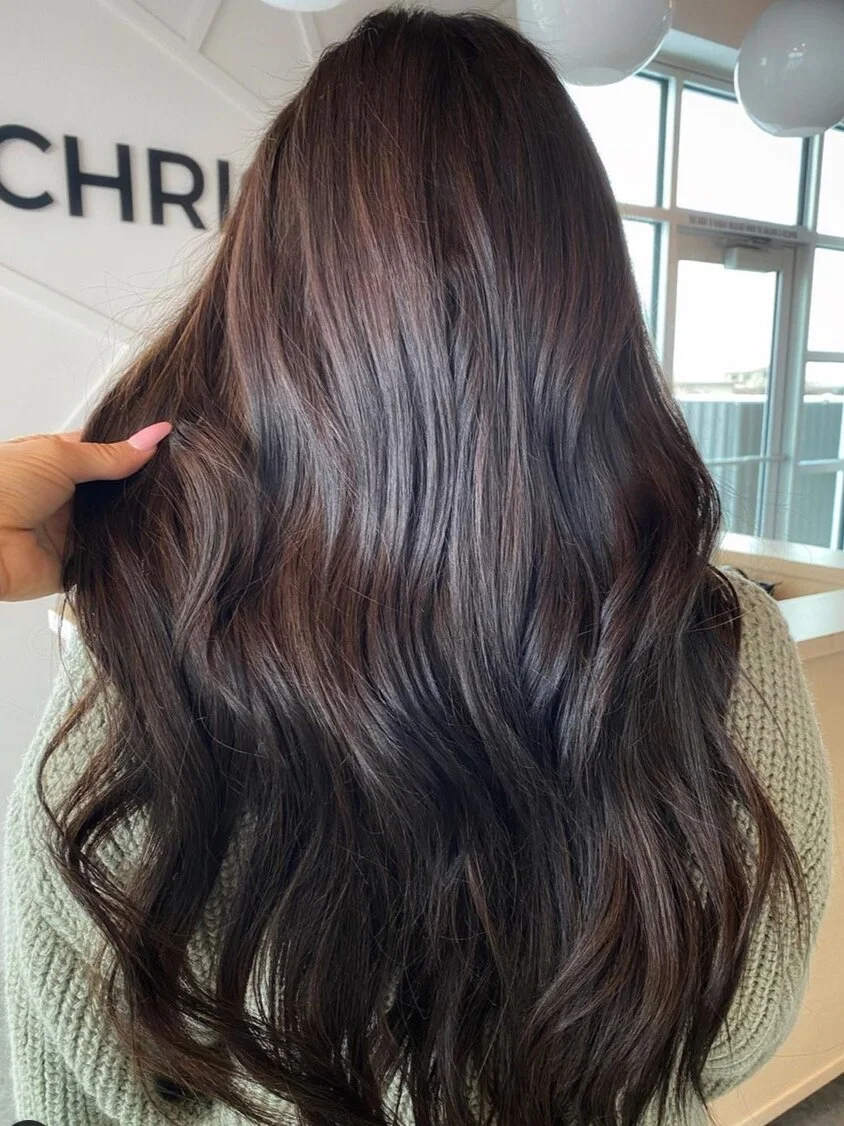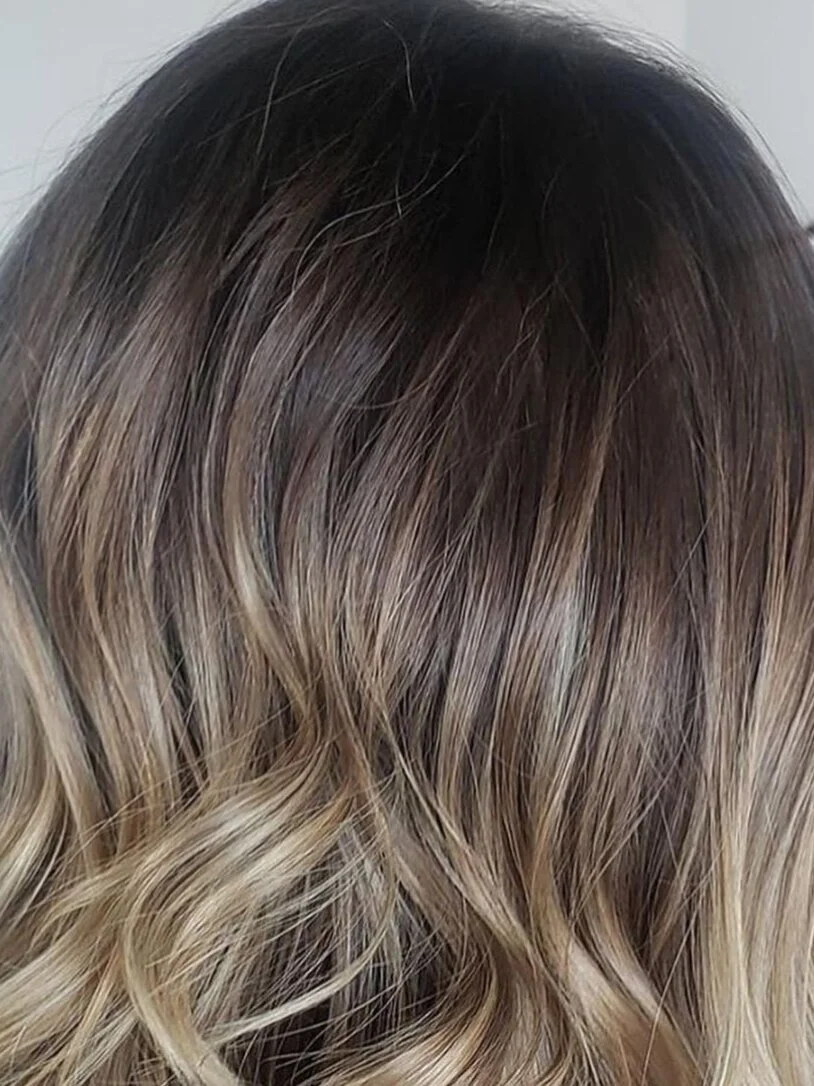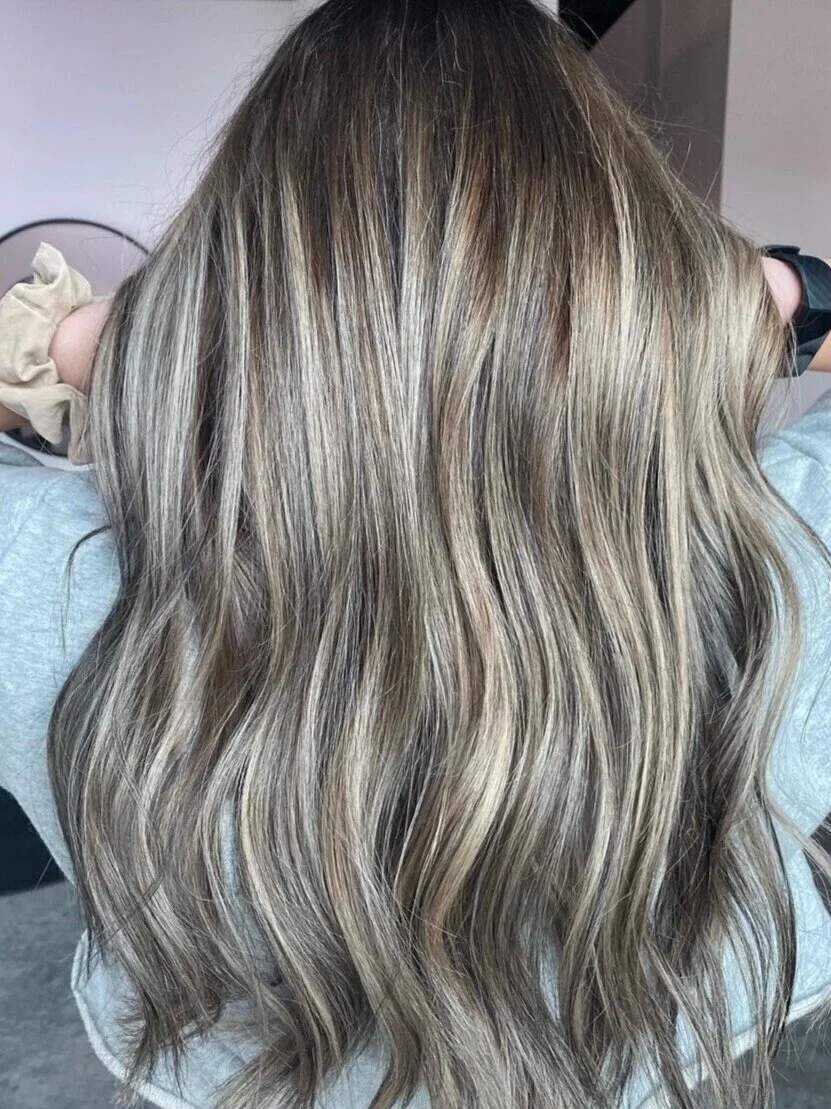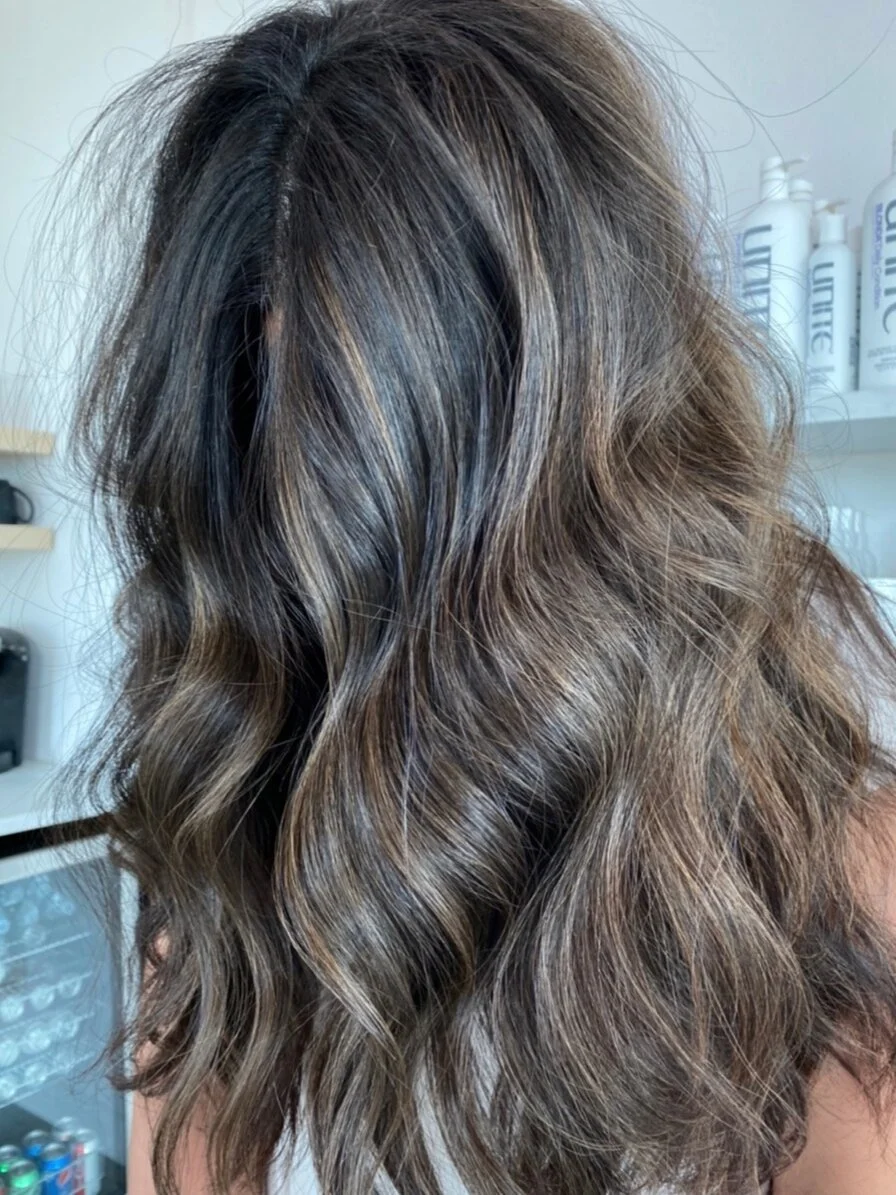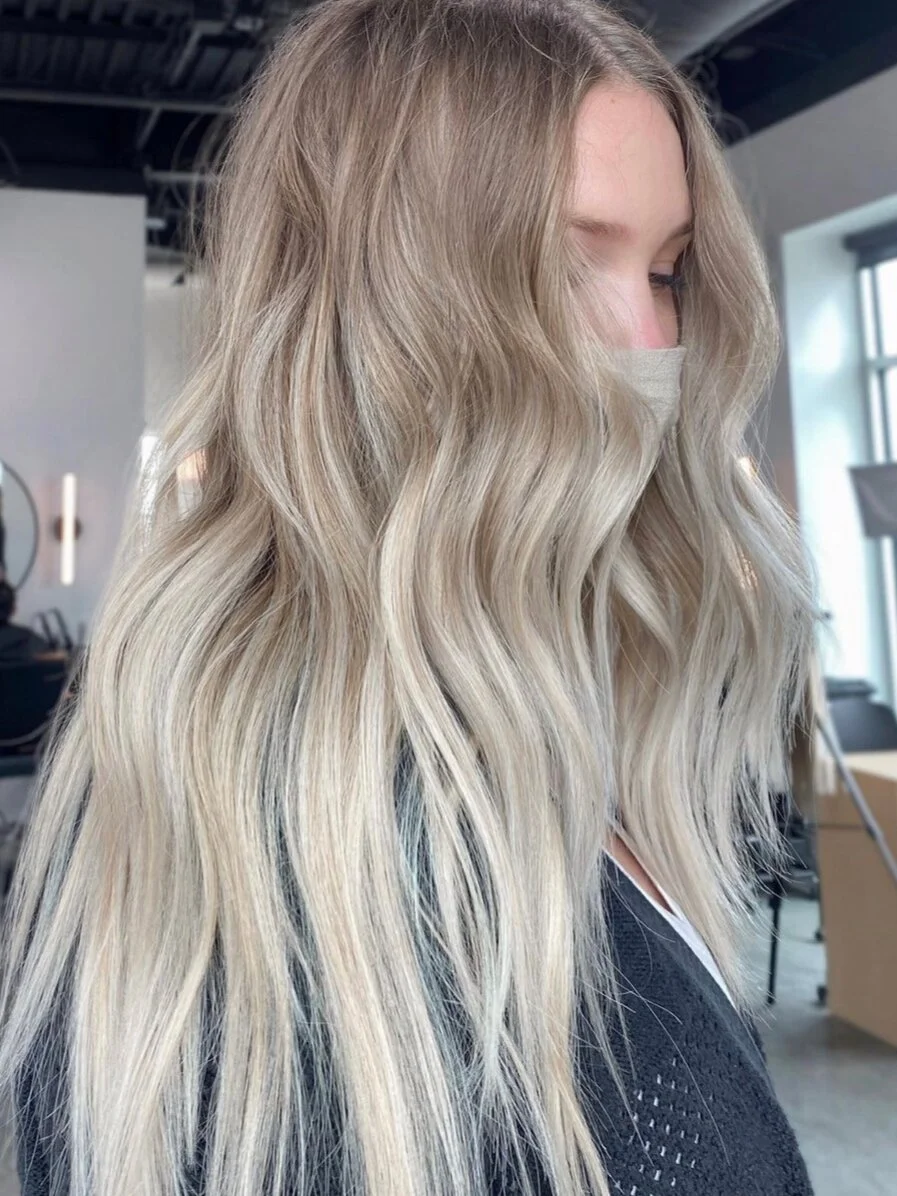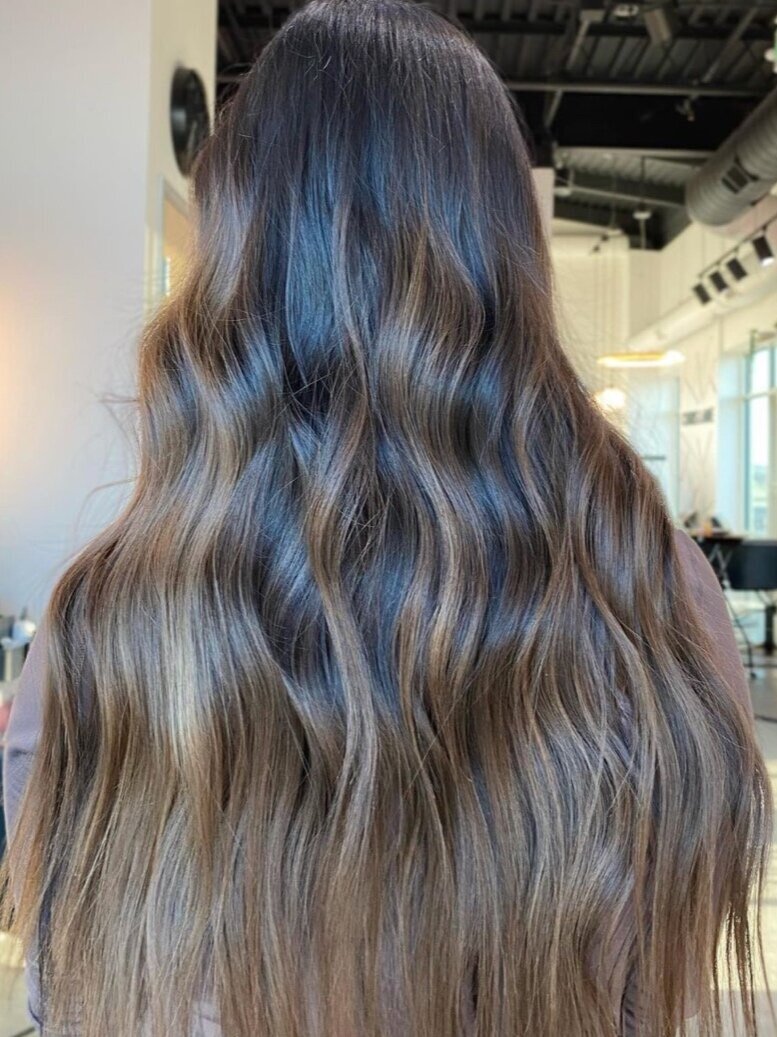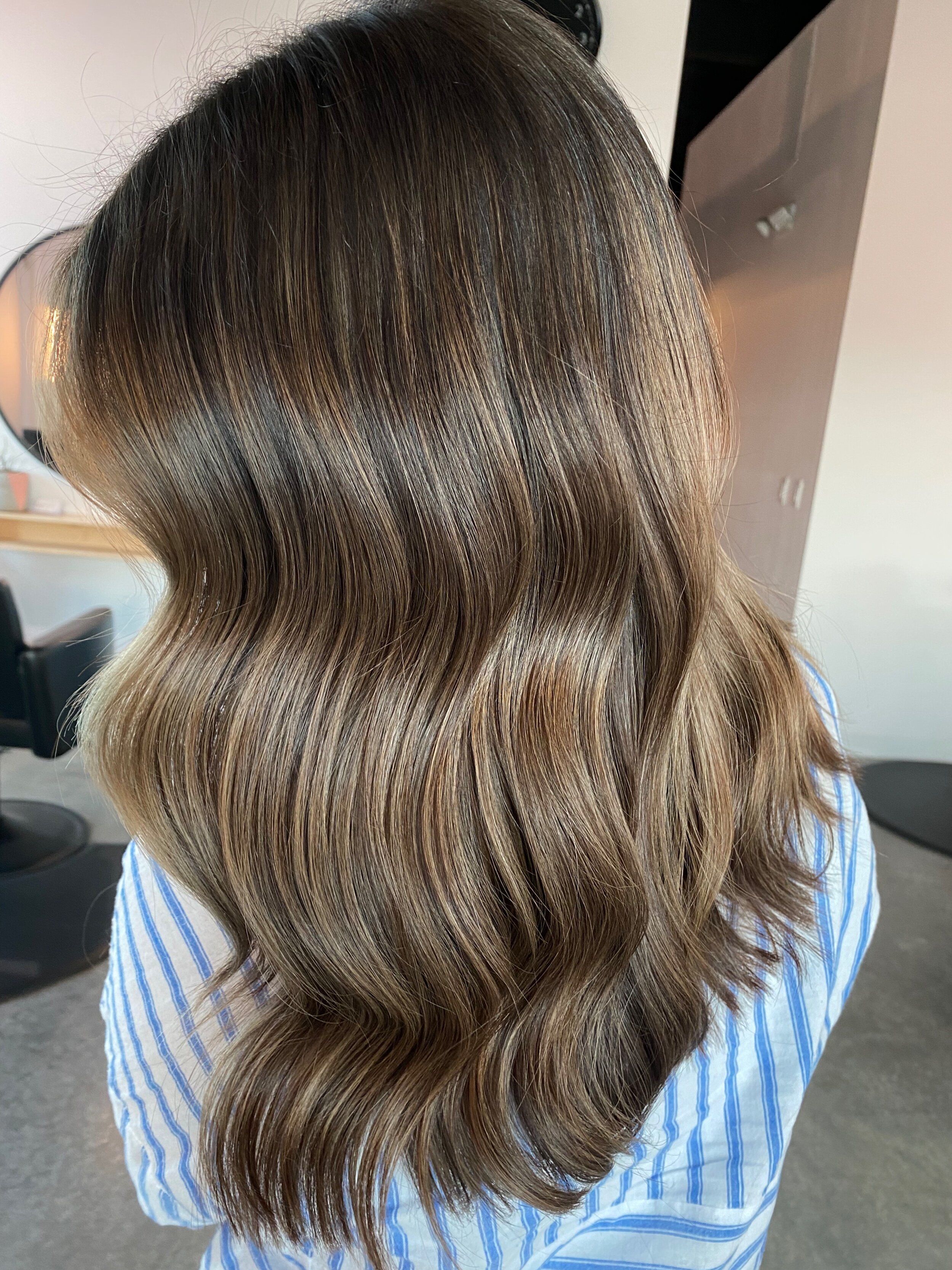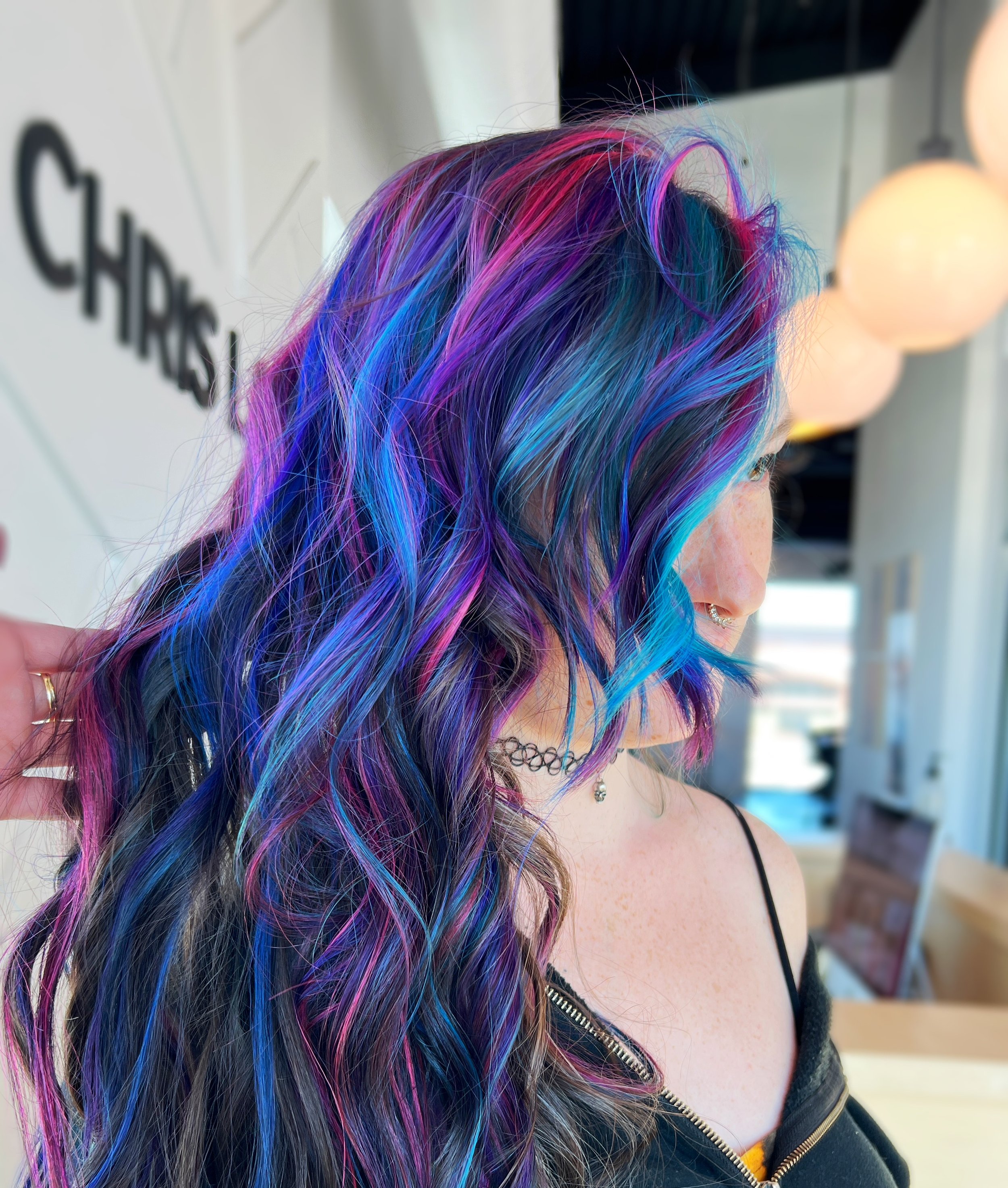Hair Color
Services
All-Over Color
A Single-Process (also known as an All-Over Color) permanently changes the color of your entire head of hair, giving you a new, one-dimensional tone that can be as dramatic or subtle as you like. An All-Over Color will not lighten your hair.*
All-Over Color is a great choice if you have very short hair that can't be easily highlighted. It's also a nice option for adding warmth, which can boost your skin tone, or if you want to cover a considerable amount of gray hair.
Keep in mind that due to root growth, all-over coloring will need to be touched up every four to eight weeks.
*An “all-over” lighter color with little or no dimension is known as a Full Blonding or a Platinum Card and requires a consultation to book.
*An “all-over” vivid color must be applied to pre-lightened hair, please see below.
Gray-Coverage
Also known as a Retouch or a Root-Touch Up. Gray Coverage permanently colors the recent growth of hair at the root to match hair that was previously colored or to cover gray hairs to match your natural shade. A demi-permanent gloss is then applied to the hair from the mid-shaft to the ends to refresh the color and/or add shine.
A Bleach Retouch (also known as a platinum retouch) is when lightener (bleach) is applied to the outgrowth at the scalp to the line of pre-lightened hair to match previously platinum bleached hair. A bleach retouch requires a consultation to book, as it is important not to overlap the lightener or irritate the scalp.
Foil
Foil Highlighting is the most traditional highlight method. The process involves using lightener (bleach) to isolate the areas where you want brightness and working with the natural color for more or less dimension. The technique can be made streaky (chunky) to well-blended (baby lights). Highlights are an ideal option if you have a great base hair tone. Results can range from soft and natural to super bright blonde, depending on your hair and desired outcome. You can also ask for face-framing highlights (money piece) to brighten your complexion.
Typically your stylist will “tone” the lightened hair to a desired shade and tone using a demi-permanent color.
Foil highlights are useful for covering a few gray hairs because they blend in with the highlights. This is known as Gray Blending.
Lowlights allow the stylist to add darker shades of hair, and they're often combined with highlights. This can give your color even more contrast and dimension.
A Full Foil involves highlighting every section of the head, while a Partial Foil is usually just the top half of the head. Partials are ideal for a quicker brighten up between Full Foil appointments.
It is possible to adjust your base (the hair left out of the foils) at the same time as highlighting. Base Color is the primary tone and depth of your hair, whether natural or colored. When done in conjunction with a foil appointment, a demi or permanent color is applied from root to ends of all the hair left out between the foils.
Balayage & OMBRÉ
A true Balayage is typically free-handed instead of foiled, though the look can be achieved with foils (foilage). The word Balayage (pronounced bah-ley-ahzh) is French, and means to sweep or paint. Bright around the face, melted at the root, lighter ends, effortlessly natural and “lived-in” are all descriptors for balayage hair. Almost like you spent a summer at the beach. The balayage technique is used to achieve a very naturally blended, lightened look, and while we typically associate balayage with becoming blonde, the same technique can be used to create caramel, espresso, or even pastel strands.
Some may confuse a Balayage and an Ombré. Ombré is a hair color technique in which all the ends are affected, with little or no dimension, and the transition from the deeper dark roots to the diffused, light ends is stark and dramatic. With Balayage, there is typically more dimension in the ends and the transition between dark roots and lighter ends will be much longer and more natural looking.
Toner
Before Toner
After Toner
Toners (sometimes referred to as Gloss) are most often used in conjunction with highlighting and other bleaching services, such as a Balayage, to ensure that the final results are perfect. Stylists use lightener (bleach) to lighten the hair to a desired hair color level (also referred to as its depth). Level is defined on a scale of 1 to 10. A level 1 hair color is the darkest black color hair can be, and level 10 is the lightest blonde color. The tone of that level is defined by how much warmth (also known as brassiness) is in any hair color level. Natural tones of bleached hair are typically warm (golden). A toner is used to tweak the color to the desired shade. Tones can be made warm, cool or neutral.
Usually, toner will be applied at the shampoo bowl after lightening and typically takes 10-20 minutes to process.
Your stylist will typically use different shades of toner to create your desired look. Often “tapping” the root with a darker level color and “melting” a higher level down to blend the lightest hair in the ends.
Toners are Demi-Permanent hair color, and will eventually fade. Depending on your hair and care they will last an average of 2 to 8 weeks and do not cover gray.
Toner can be applied in between color services, not just right after one, so the color lasts and looks fresh longer.
VIVIDS
Vivid hair colors are typically semi-permanent (stains) that are usually bright Fashion Colors (purple, blue, red, yellow, etc.) or other not naturally existing hair colors (rose gold, silver, lavender, etc.). This means that they are not permanent and will eventually fade over time. The life of a vivid color on your hair is short, and even shorter with Pastels. This has to do with the size of the color molecules as well as the porosity of your hair and other factors. This means that you will have to do more frequent upkeep with your bright vivid or pastel hair colors.
To achieve a bright, bold or pastel vivid color your stylist must lighten your natural hair to a pale blonde first. Not all hair can achieve this level of lightness, therefore not all vivid colors are an option for some people. Vivids are applied dry, so after lightening your stylist will blow-dry your hair before applying the vivids in the colors and placement of your choosing.* Plan to be in the salon longer than usual when doing a vivid, because of this double-process.
Vivids are fun, bold, and keep things interesting!
*Because of the variables involved in lightening, color options, and placement, a consultation is required to book a first-time vivid appointment.

